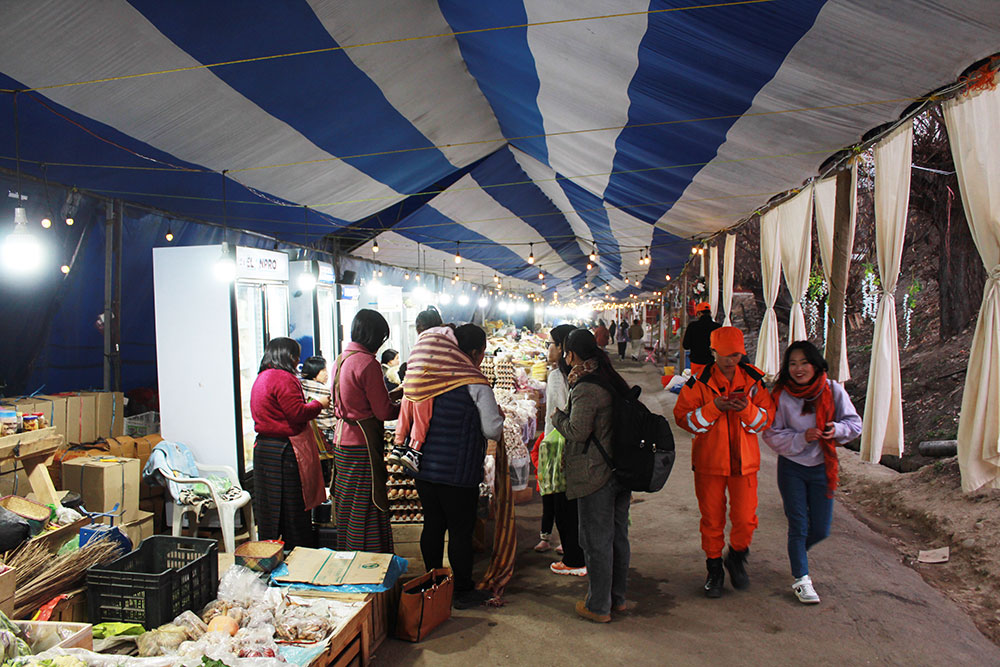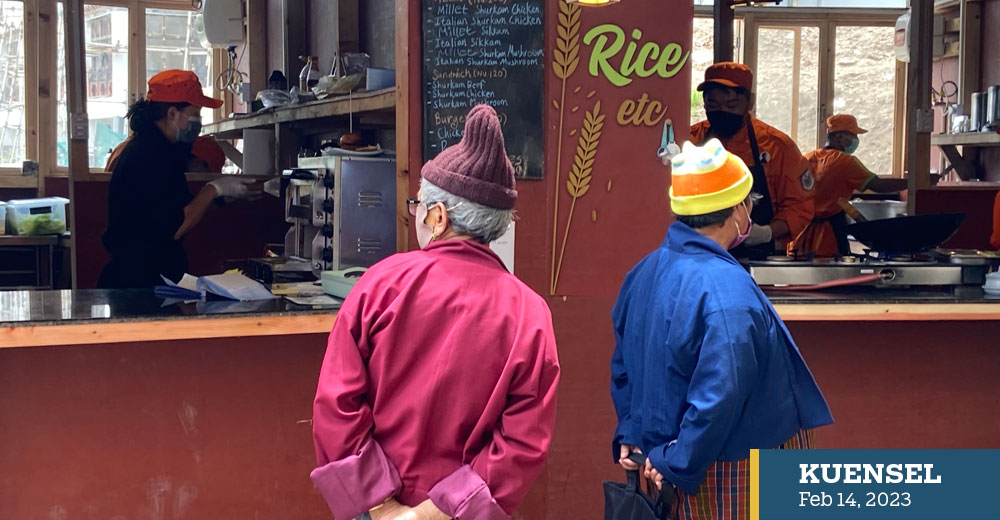Nima Wangdi & Thinley Namgay
Crowded, damp and dark, the Centenary Farmer’s Market (CFM) was losing its charm. The once thriving shopping centre was posing a challenge as Covid-19 pandemic hit the country. It had to change.
However, modifying it when the entire country was facing acute shortage of labour and materials was going to be a nightmare. Then came in the de-suups. In droves.
The renovation work on the top floor of CFM started in mid-August 2022 and the next phase (ground floor) is expected to complete by June 2023.
Before closing the CFM to revitalise it, the vendors had to be placed in a proper place. The de-suups then built Kaja Throm. Built upon the Royal command as a gift from His Majesty The King, Kaja Throm embraces the value of income generation and vibrant community space. More than 200 de-suups are engaged for CFM construction and the Kaja Throm.
Kaja Throm also serves as a place where de-suups after completion of De-suup Reskilling Programme come for on-the-job-training.
The revitalisation of the CFM once complete will have more public spaces for visitors to sit and relax, entertainment facilities, and a daycare center for the vendors’ children.
Ministry of Infrastructure and Transport’s Senior Architect, Dorji Yangki Dorji said there will be dry and cold storage. “Displaying products in an improved way with good lighting will make it look conducive.”
Dorji Yangki Dorji said the revitalisation of the CFM would be an example of a well-designed market and community space with an emphasis on product display and improved user-experience. “It will also highlight the importance of using alternative energy in the form of solar panels.”


Information and visual guides will also be provided with improved waste management facilities. It will also provide a platform for skilled young entrepreneurs and artisans to showcase their products.
Officials said there will also be greenery, shade, and solar panels that will supply energy to the market.
The use of natural materials like timber, stone, and bamboo will bring in a more natural tone and feel. The project included local carpenters, painters and bamboo weavers to add a touch of culture with a mix of modernity.
Once the renovation of the CFM is complete, the vendors at the Kaja Throm will move into the new space. However, farmers and entrepreneurs can still use the space to sell their products. It will also serve as a recreational space for the community and tourists.
Vendors at Kaja Throm said that business on the whole has been good so far despite some challenges. However, this winter has not been an ideal time for business.
De-suup Kinley Wangmo, a trainee at De-suung Café said the minimum income of the café is Nu 30,000 a day in summer and their customers are mainly students. Today, the café makes at least Nu 7,000 a day. “We sell 20 varieties of coffee and pastry,” she said.
Vegetable vendors said that they hardly earn Nu 2,000 a day.
Tika Ram Bhandari, who sells fruit juice, said that he could fetch only Nu 1,000 a day these days. He prefers summer. “We get local fruits in summer and there is plenty of choices.”
Many customers like the idea of Kaja Throm.
Lam Pema from Wangdue said, “Kaja Throm is unique and helps businesses. I think it would be great to have Kaja Throm in other places too.”
He said the cleanliness, arrangement, and presentation of products at Kaja Throm tempts him to visit whenever he is in Thimphu. “It looks amazing.”
For Sonam Pem Tshoki, a private employee said the Throm serves as a hub for many activities. “It is an ideal place to hang out at weekends with friends and relatives.”
“In Bhutan, everything is Thimphu-centric. Anything new and innovative is mostly in Thimphu. A multipurpose hub like this is essential for every dzongkhag,” Sonam said.
Besides Thimphu, Paro and Phuentsholing have Kaja Throms as of now. De-suups are constructing some more such Throms in the dzongkhags, according to the officials.


